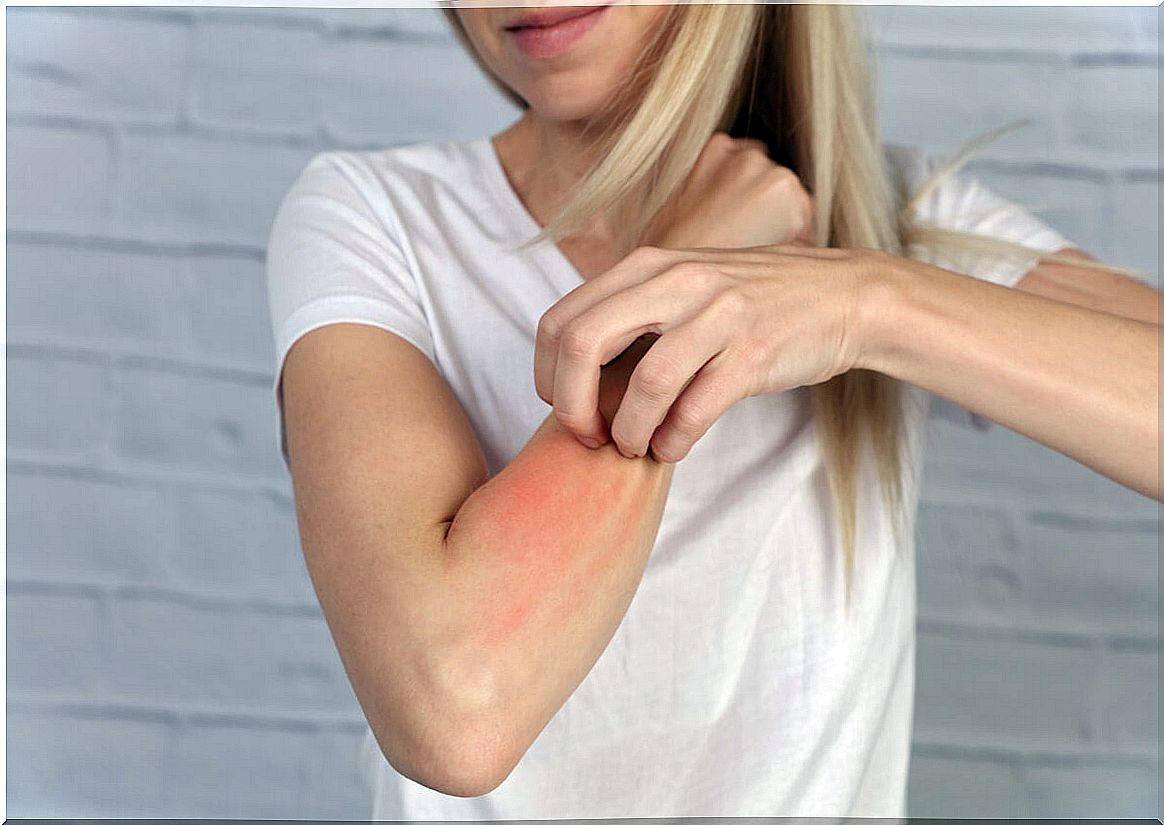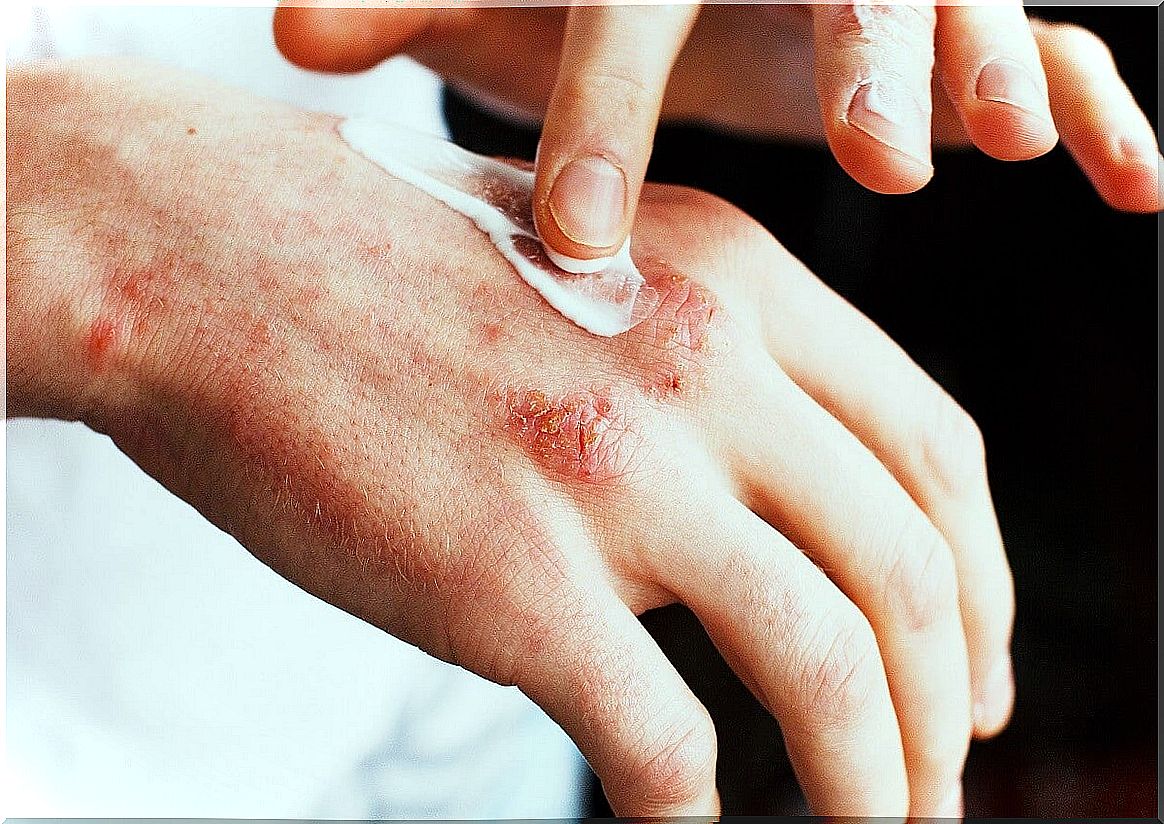Skin Rash: Types And Main Causes
A skin rash, also known as “efflorescence,” is any eruptive lesion on the skin. In other words, it is a change in the epidermis that can affect the color, appearance, shape or sensation to the touch. This event can occur on the scalp, face, neck, chest, back, and other parts of the body.
Epidemiological studies indicate that the prevalence of one of the diseases that cause skin rashes, atopic dermatitis, is 15% to 30% of children in high-income countries. This indicates that dermal pathologies are on the rise and the order of the day.
The skin is the first barrier – along with saliva, tears and mucous membranes – that protects us from possible external pathogens. Therefore, taking into account the processes that can damage it is essential. This time we tell you everything you need to know about skin rashes, from the most common types to their causes.
What are the types of skin rashes?
The definition of the term skin rash is very diffuse, which is why multiple pathologies fall within it. The Mayo Clinic shows us the most common types of skin rashes.
- Atopic dermatitis: This is a permanent condition that causes redness and itching of the skin. No cure has been found for it, but treatments can mitigate the itchiness and the appearance of new breakouts.
- Contact dermatitis: it is a rash caused by direct contact with substances to which the person does not respond well. This can be irritating – the most common – or allergic in nature.
- Heat rash (miliaria): it is due to the accumulation of sweat in the skin ducts, usually due to very hot weather. It manifests itself in the form of small pustules that are very itchy.
- Intertrigo: common in obese people. It is produced by the friction of skin folds and the accumulation of bacteria and sweat.
- Psoriasis: it is an inflammatory disease of the skin of autoimmune origin. Produces thickened squamous lesions.
We have presented some of the examples of skin eruptions, but there are many more: ringworm, rosacea or shingles – caused by herpes zoster – are clear examples of this. The etiology of this group of conditions is vast.

What are its main causes?
According to the US National Library of Medicine, simple skin rashes — especially contact dermatitis — are caused by touching things that damage the skin, such as chemicals, cosmetics, dyes, and some vegetables with poisonous potential.
On the other hand, some eruptions are caused by intraepidermal viral, fungal, or bacterial invasion. An example of this is impetigo in children, caused by an infection by the bacterium Streptococcus pyogenes.
It can also occur by microorganisms such as ringworm or dermatophytes, which settle as colonies of fungi on the skin and feed on keratin; consequently, they cause tissue damage. Finally, we cannot forget that many skin rashes are due to allergies.
Guidelines for caring for a skin rash
Of course, the treatment will depend largely on the causative agent. Ringworm is treated with antifungals, shingles is treated with antivirals and vaccines, and impetigo with antibiotic ointments. The nature of the invading pathogen will determine in each case the protocol to be followed, so self-medication is not considered in these tables.
On the other hand, chronic diseases, such as atopic dermatitis or psoriasis, do not have an absolute cure. In these cases, portals such as the American Academy of Asthma and Immunology indicate the following strategies:
- Avoid rubbing your skin excessively.
- Wear comfortable clothes.
- Use dermatologist-prescribed creams, solutions, and lotions to relieve itching.
- Leave the affected area exposed to the air as much as possible.
- Use the least amount of soap possible and replace it with gels with a neutral pH.
- In general, 1% hydrocortisone cream effectively treats redness, swelling, and sore skin. This family of drugs is available without a prescription in pharmacies.

When to go to the doctor?
Some types of skin rashes resolve without the need for specific treatment. However, it is necessary to consult, especially if there are other symptoms such as joint pain, difficulty breathing, a swollen face, areas that are too sensitive and painful or lines of redness.
As we have said before, many skin eruptions have their origin in chronic conditions that do not pose a major problem – such as dermatitis. Unfortunately, in other cases the solution is not so simple, since the trigger turns out to be a viral, fungal or bacterial infection that requires immediate treatment.
What to remember about skin rashes?
As we’ve detailed, a skin rash can be caused by genetic inheritance, infections, environmental conditions, allergies, and many other factors — or a combination of several.
In general, it is convenient to go to the doctor with any questions or discomfort. Since it is a condition with multiple underlying causes, it is not good to indulge in self-medication.
The professional will be the one who evaluates the injuries and determines which therapeutic options are appropriate depending on the case. In addition, you can direct them to other care to avoid complications.








